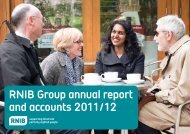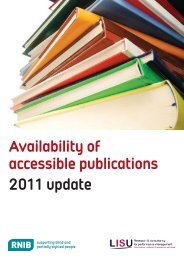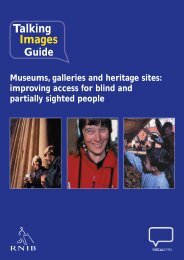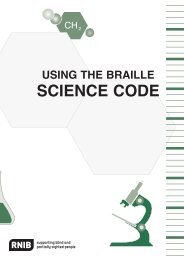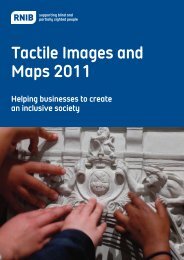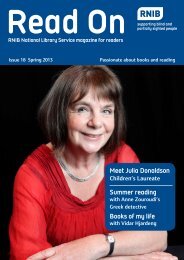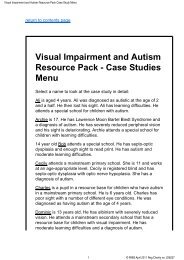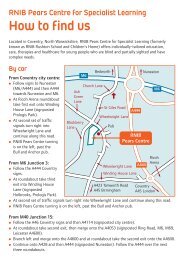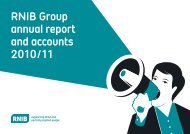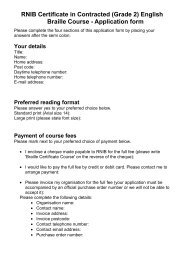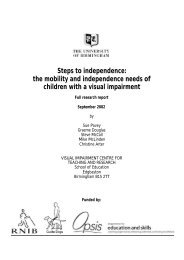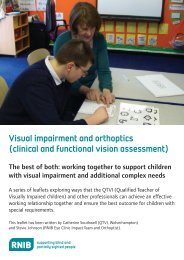Download Complete Report (PDF 1.19mb) - RNIB
Download Complete Report (PDF 1.19mb) - RNIB
Download Complete Report (PDF 1.19mb) - RNIB
Create successful ePaper yourself
Turn your PDF publications into a flip-book with our unique Google optimized e-Paper software.
3. Methodology<br />
overview of uses of their own DAB radio<br />
adopting and using their own DAB radio<br />
demonstration of how interviewees use their DAB radios<br />
trying an unfamiliar DAB radio and expressing their thoughts (eg likes, dislikes,<br />
what’s easy and intuitive and what’s not) whilst using it.<br />
They used either:<br />
low-cost DAB radio ( around £25)<br />
DAB radio with voice output (around £100)<br />
DAB radio with advanced functions (around £200).<br />
At the end of the interview, participants were fully debriefed about the research<br />
objectives and each person was paid £30 for their time.<br />
The DAB radio consumer in-depth interview data (interview transcriptions and<br />
observations of DAB radio use noted by the interviewers) were used to generate a<br />
checklist for recommended features of DAB radio equipment. They also informed the<br />
development of a second phase in the consumer research - the Short Preference<br />
Survey (see below).<br />
3.2. Consumer research: Short Preference Survey<br />
3.2.1. Rationale<br />
In addition to revealing key usability and accessibility considerations for digital radio<br />
equipment design, the in-depth interviews identified the typical range of radio<br />
functions that participants used and understood, and those which were not used or<br />
understood. These insights informed the development of a 27-item telephone survey<br />
(the ‘Short Preference Survey’). Whilst the in-depth interviews provided rich contextual<br />
information about digital radio use, the aim of the Short Preference Survey was to<br />
collect quantitative data. A key focus was to understand the proportions of sighted<br />
and blind and partially sighted samples who could use their radios independently.<br />
3.2.2. Sample for the Short Preference Survey<br />
The target was to have a nationally representative sample of DAB radio users and a<br />
sample of 100 blind and partially sighted people, matched as closely as possible to the<br />
age profile of the nationally representative sample of DAB radio users.<br />
28



